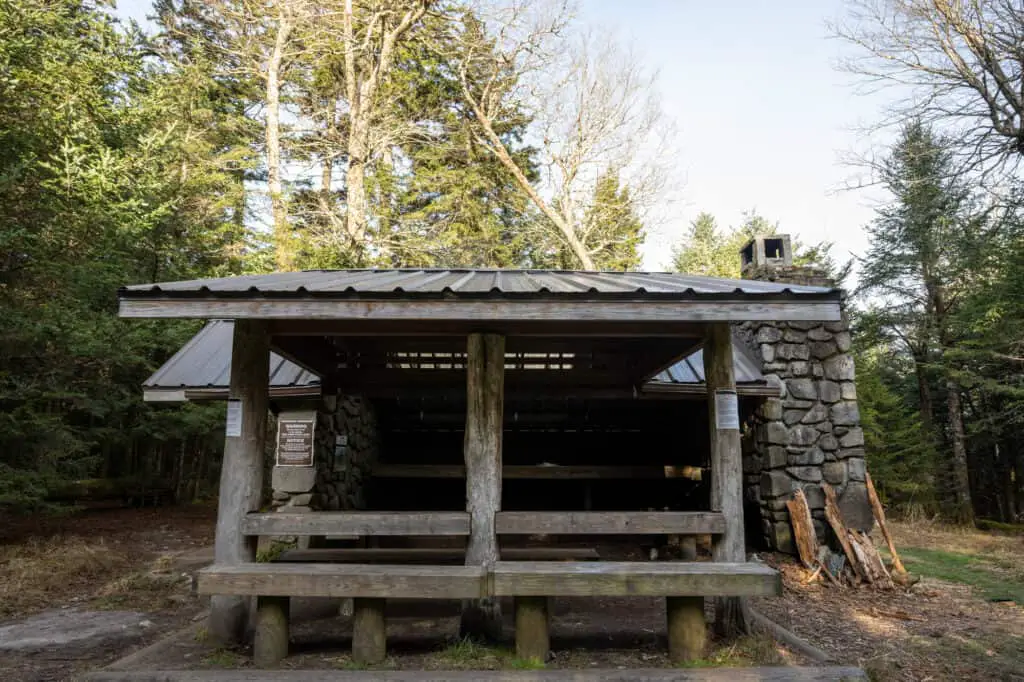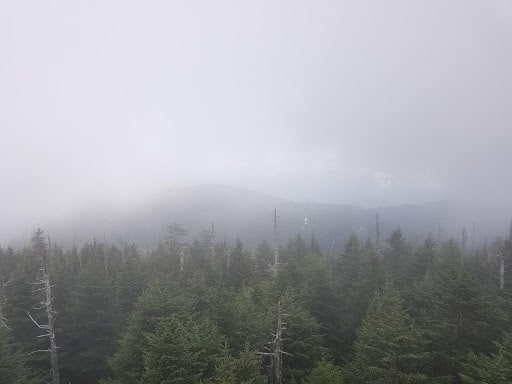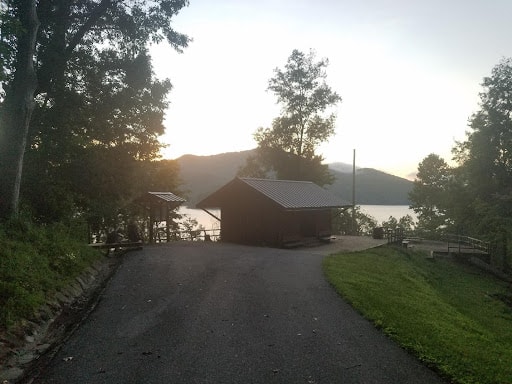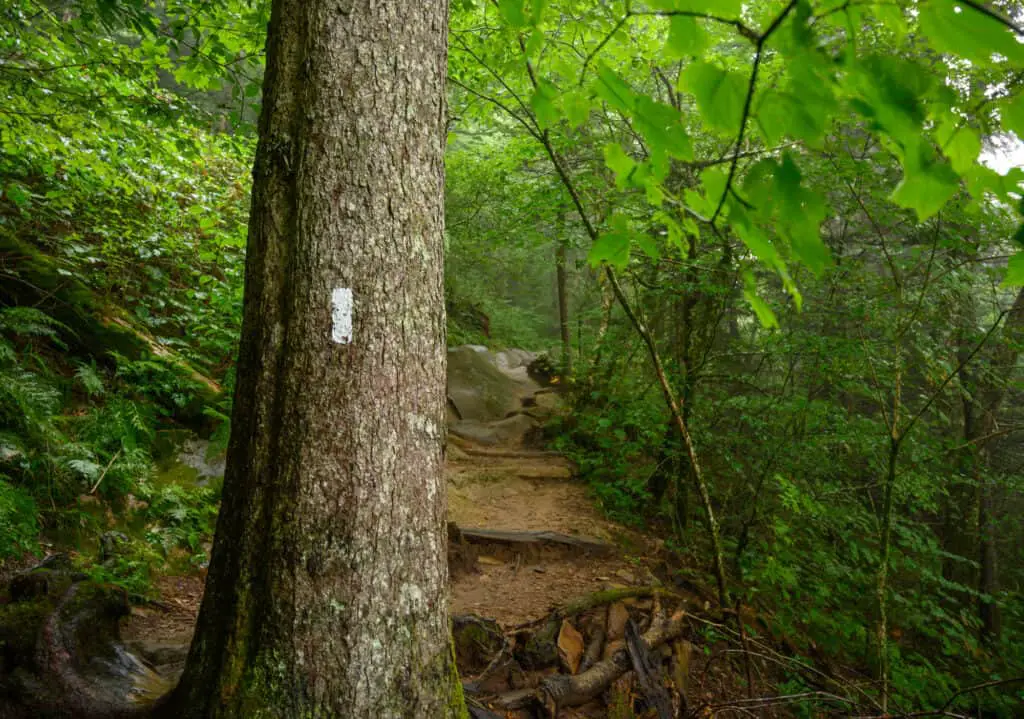When Robert approached me about writing this guest article I immediately jumped on the opportunity to share it with you. Great Smoky Mountains National Park is one of my favorite parks. In his college days, Brad hiked this section and loves to reminisce, so it was fun to get an update on backpacking the Appalachian Trail in Smoky Mountains National Park. Ladona
One of the most traveled sections of the AT is the 71-mile segment running through Smoky Mountains National Park. Starting and ending around the same elevation, you’ll hike up and down 24,000 feet during the seven days it takes to go from beginning to end! I had the opportunity to hike over 300 miles of the Appalachian Trail in 2017. I found some of the greatest memories while backpacking the Appalachian Trail in Great Smoky Mountains National Park.
Here, I will go over some of the important things you’ll want to know about this fantastic trip. And I’ll share how to avoid some of my mistakes on your backpacking trip through the smoky mountains!
Preparing for Hiking the AT through Great Smoky Mountains National Park
Before you embark on your adventure through the Smokies, there are a few things to consider:
Determine Your Route
To hike the Appalachian Trail through the Smoky Mountains, you’ll need to decide if you want to travel North to South or South to North to kick off your planning. The Fontana Dam marks the southernmost end of the trail within the Smokies section. The northernmost end of the Smokies AT portion, at Davenport Gap, is slightly less accessible. It crosses out of the park in an unpopulated area, so you’ll need to arrange transportation there or back, depending on your plans.

Gear Tips
As with any backpacking trip, the right gear is essential for the Appalachian Trail. Water purifiers are a must, alongside your regular hiking and sleeping gear, to ensure you have access to safe drinking water in the backcountry. Be sure to bring enough food for your trip as there are few resupply locations along the trail within the smokies (none without a ride or long detour).
Tents aren’t required if you plan to use the shelters, but I’d recommend finding the right lightweight tent to ensure you have a roof over your head in case of emergency or if the shelter is full of other hikers.
Get Your Backcountry Permits as Early as Possible
The National Park Service requires permits and advanced reservations for hikers planning to backpack and use backcountry campgrounds along the Appalachian Trail in the Great Smoky Mountains. Obtain your permits online through the GSMNP backcountry office to ensure space at your planned shelter. They are available for $4 per night, with a maximum fee of $20. If you’re making a longer trip, you can apply for an AT Thru-Hiker permit that has extended timelines to allow for more flexibility.
Weather in the Smokies is Unpredictable
The weather in the Smokies can be unpredictable, especially in the spring and fall. Snow and cold weather can sweep in from November through May in higher elevations (most of the trail).
For summer hikes, expect it to be HOT AND HUMID. You’ll probably experience regular showers in the afternoons as if you were hiking through a rainforest. Make sure your backpack is waterproof, you have a change of clothing and are prepared for hiking in the rain. However, the rain can start and stop so quickly that I rarely put on my rain jacket when it rained. You’ll dry quickly once the sun comes back out.

About Sleeping on the Appalachian Trail in Smoky Mountains National Park
Since the park has high foot traffic, the National Park Service has limited camping to specific front country campgrounds and backcountry campgrounds to help isolate the impact of human activities. When you order your permit (discussed above), you should also make your reservations for the backcountry campgrounds where you plan to stay. These campgrounds will have a shared three-wall shelter that will give you a dry place to rest your head. However, you’ll find few amenities otherwise.
If you’d rather have some more privacy in the National Park, you’re permitted to set up a tent anywhere at the campground. But unlike national forests, you cannot set up camp outside of the designated campsites. Most backpackers will choose a traditional backpacking tent for the AT. However, other types of tents are small and light enough to fit at the backcountry shelters.
Campsites along the Appalachian Trail usually come with a bear box or line to hang your food. Be sure to do this, or you will have an unwelcome visitor at some point during your trip from one of the thousands of black bears that live in the Smokies.
Major Points of Interest along the Appalachian Trail within the National Park

Clingmans Dome: Highest Point on the Appalachian Trail
About halfway through your trip, you’ll finally change directions and start to go downhill. To reach that midpoint on the hiking trails, you must get to Clingmans Dome, the highest point on both the entire Appalachian trail and the state of Tennessee.
Clingmans Dome is usually crowded with the Great Smoky Mountains National Park tourists who have driven to the top and are interested in climbing the dome. You’ll also find many other AT hikers passing through to walk to the top of the dome (one dad pointed me out to his kids as ‘one of those hiker guys’ while I passed by with my 40+ liter backpack). If you’re lucky, you’ll be rewarded with 360-degree views of the entire park from Clingmans Dome. If you’re unlucky, you might get 360-degree views of why they are called the smoky mountains. With a bit of time, grab lunch near the dome, and the ever-changing weather might sweep the fog away before you continue.
Fontana Dam & ‘Hilton’

Either beginning or ending your trip will bring you across the Fontana Dam. It is one of the old Tennessee Valley Authority dams built in the 1940s on Fontana Lake. The only dam crossing along the Appalachian Trail is home to the most “luxurious” shelter. The Fontana dam shelter is frequently referred to as the ‘Fontana Hilton’ by AT hikers, featuring hot showers and four walls. That’s because showers and large bunkhouses are hard to come by the rest of the 2,000-mile trail.
Newfound Gap & Gatlinburg: An Encounter with Civilization
On the other end of the park, the Newfound Gap is the only other major road crossing that the entire Appalachian Trail will pass through. This stop is an opportunity to arrange (or hitch) a ride into nearby Gatlinburg if you’re looking for a shower or hot meal to help break up the trip.
Personally, Gatlinburg was a bit of a shock to the system after spending a few days in the woods as it is a very loud and touristy town, but you can’t replace a juicy burger on the trail.
Hopefully, this helps you get started in planning your next outdoor adventure! While it’s hard to highlight here, the most valuable part of your journey will be the friends you make along the way and the unforgettable experiences with nature. Come with enough gear to stay safe, and everything else will fall into place.
What is the Appalachian Trail?
The Appalachian Trail which is fondly referred to as The AT, is a 2200-mile backcountry hiking trail that runs through the Eastern United States between Georgia and Maine. It crosses 71 miles of trails through the Great Smoky Mountains National Park, passing through North Carolina and Tennessee. One of the best resources for additional information on hiking the AT is the Appalachian Trail Conservancy, a non-profit organization committed to preserving this amazing trail for the future.

Meet our Guest – Robert from Midwest Camping
Robert is a Co-Founder and editor at Midwest Camping. He has backpacked over three hundred miles of the Appalachian trail, visited seventeen national parks, and camped regularly for the last two decades.
